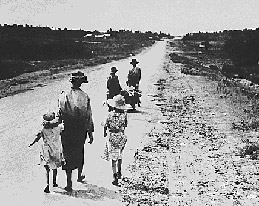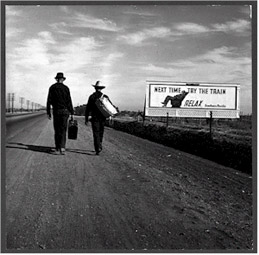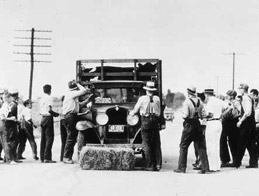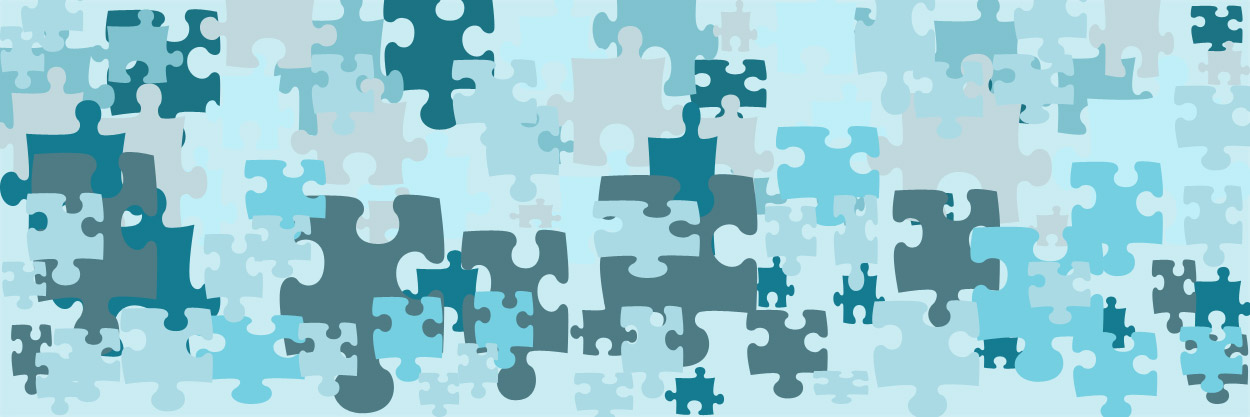
The Great Depression: The Fall of the American Dream
During the Great Depression the highly polished American Dream became a dark and sorrowful nightmare. What might once have been considered a "land of opportunity" had quickly become a land of devastation. With much pain and tremendous efforts, the citizens of America stumbled through the dark years of the 1930s.
The true cause of the Depression is still a matter considered undecided. Internet source Wikipedia states, "Scholars have not agreed upon the exact causes and their relative importance." Some believe that it was caused mostly by a failure of the free markets. The Marxist critique of political economy emphasizes "contradictions within capital itself as giving rise to an inherently unbalanced dynamic of accumulation resulting in an over accumulation of capital, culminating in periodic crises of devaluation of capital." This means the Marxist theory believes that the depression was caused solely in the sphere of production, though there were many causes for the first downturn in 1929, such causes include structural weaknesses.
The effects of the Depression spread worldwide. Countries such as South Africa, The Netherlands, Latin America, The Soviet Union, and many others were affected in a variety of ways. The United States suffered major losses with 25% of its population out of work and the cost of living having skyrocketed. Secretary of the Treasury Andrew Mellon believed that shock treatment would be the best movement to recovery. Shock treatment included liquidating labor, liquidating stocks, liquidating the farmers, and liquidating real estate. "That will purge the rottenness out of the system," stated Mellon. However, the president at the time, Hoover, rejected this advice because he did not believe that the government should directly send aid to the people. He instead insisted on "voluntary cooperation" between business and government. Later, when President Franklin Roosevelt was inaugurated in 1933, the Dust Bowl occurred. The Dust Bowl was caused by drought and erosion combined. This shifted many thousands of displaced people of their farms in the Midwest., Roosevelt later proposed the New Deal programs that looked to "stimulate demand and provide work and relief for the impoverished through increased government spending." These programs seemed to highly decrease the amount of unemployment during Roosevelt's first term, however unemployment remained "stubbornly' high until 1942.
The Recession of 1937 was a point in the Depression where the economy suffered an unexpected downfall, which lasted through most of the following year. Unemployment grew from 14.3% in 1937 to 19% in 1938. Later the rearmament policies that were meant to counter the threat from Nazi Germany during World War 2 helped the economies in Europe. The "mobilization of manpower" after the outbreak of war in 1939 graciously ended unemployment in the United States. However, many businessmen ignored the national debt and new taxes forcing many people to work overtime and give up any leisure activities. Most businesses hired every person they could, some even begged people to work for them.
Though the American Dream and the morale of many people was badly scarred, the United States pulled out the Depression and kept running strong. Without a sense of sorrow and pain, people will never truly appreciate or understand the importance of happiness and prosperity. One can say that America will need another wake-up call eventually because people are already forgetting how drastic the effects of the Depression were and how many families before them suffered deeply.




-
Sources: "Wikipedia" October 12, 2003 http://en.wikipedia.org/wiki/The_great_depression